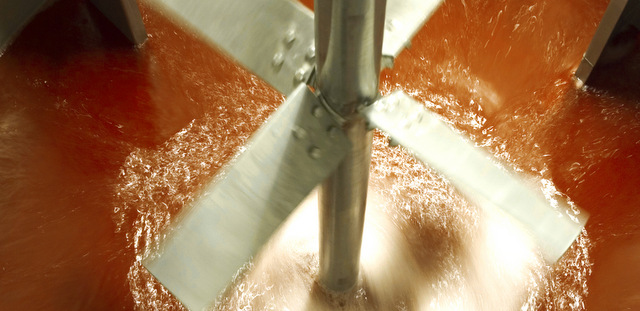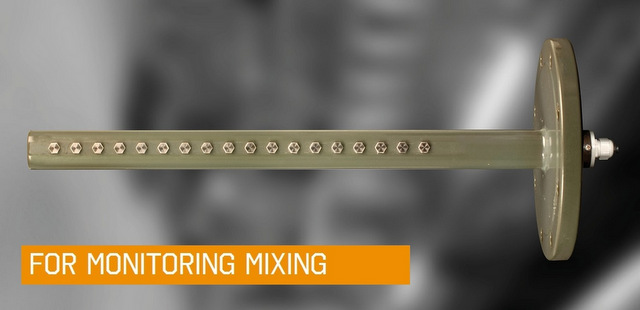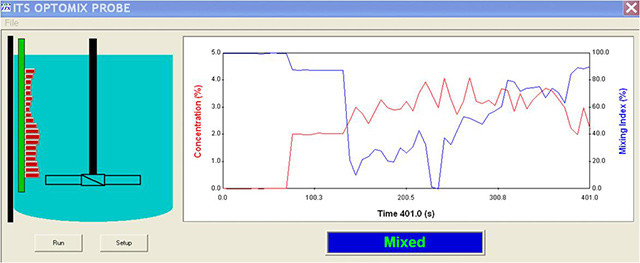Batch mixing generally refers to mixing processes in vessels and ITS tomography instrumentation provides a tool to understand, optimise and control mixing.
Tomography sensors take data from between 200 to 2,400 measurement points in a single snapshot, thus providing a sound basis to monitor changes in concentration of different materials and so quantify mixing.
Sensors can be retrofitted through using probe based instruments, scanning the z-axis (which usually presents the key challenge to effective mixing). Alternatively, an array of up to 8 circular planes, each with 16 electrodes can be used to provide a more complete picture of the mixing process.
Data can be presented in real time and used:
- qualitatively to provide a 3D movie of mixing,
- quantitatively, to provide T90 and T95 mixing parameters
- as a control output with a statistical mixing parameter available as a 4-20mA signal
Many of our customers have used ITS technology to characterise different mixing configurations, as a basis for choosing between different mixers and setting batch cycle times.
Sensors can be placed in ATEX environment and electrodes constructed of hardwearing and chemically resistant materials.
As ITS technology scans using electrical measurements it is applicable to a wide range of materials – from slurries, suspensions to highly energetic gas-liquid systems. This has made it particularly suited to characterising non-Newtonian systems (such as mixing caverns).



